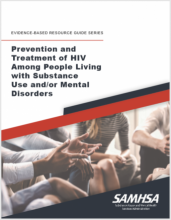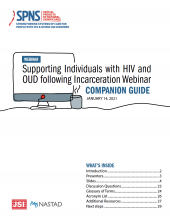
Harm reduction strategies and tools should be accessible to everyone – regardless of location, time, and/or experience.



Harm reduction strategies and tools should be accessible to everyone – regardless of location, time, and/or experience.
This publication describes the recent trends of drug overdose deaths in the United States (U.S.) and the benefits of adopting harm reduction approaches.
A recent study published in Drug and Alcohol Dependence found evidence for racial/ethnic disparities in buprenorphine distribution across the United States.
This document provides a quick overview of the federal discretionary funding programs that support essential aspects of the nation’s HIV response.
Clinicians can now access up-to-date evidence-based office-based addiction treatment recommendations for treating opioid use disorder (OUD) on a smartphone app.
Achieving the goals of the Ending the HIV Epidemic (EHE) Initiative depends on doing more to strengthen communities, reduce the harm associated with drug use, and prevent disease transmission.
This policy brief identified states potentially at risk for an HIV or HCV outbreak and used data from multiple sources to examine rural-urban differences in 1) state-level infectious disease surveillance, prevention activities, and collaboration with stakeholders; 2) local health department-level